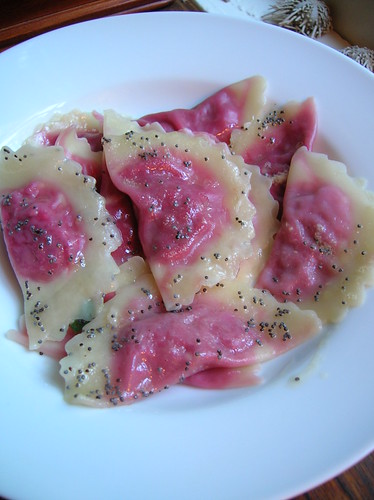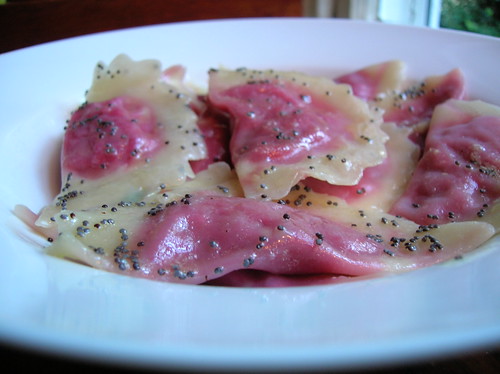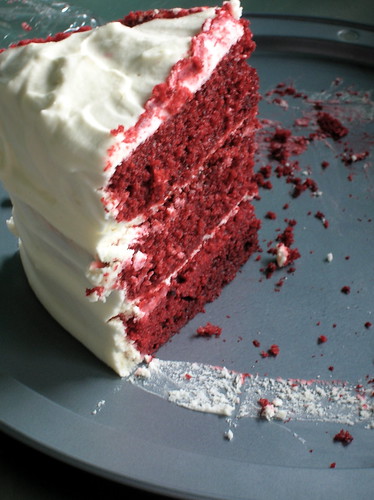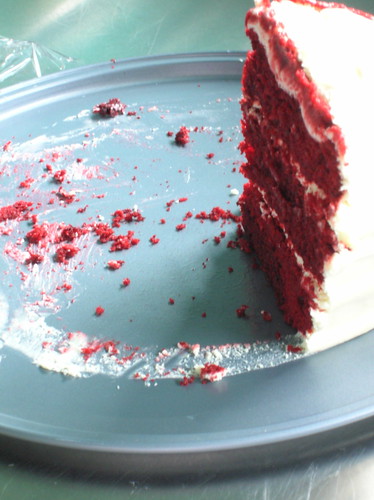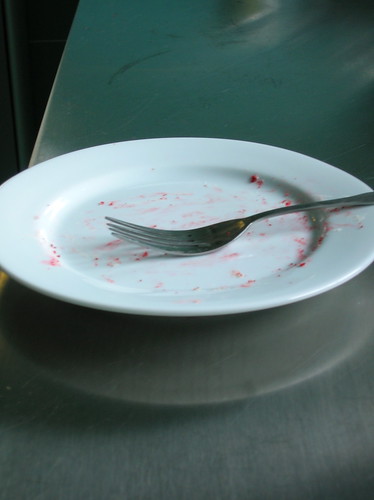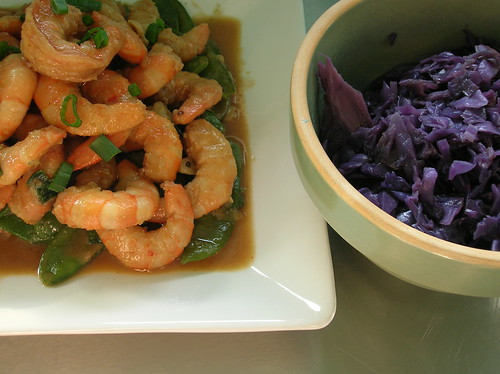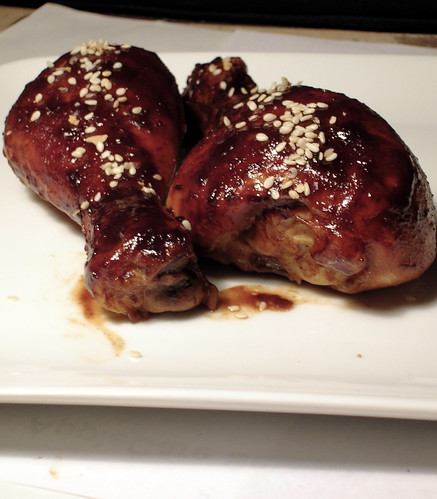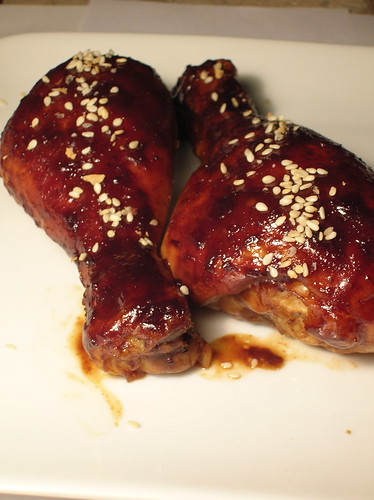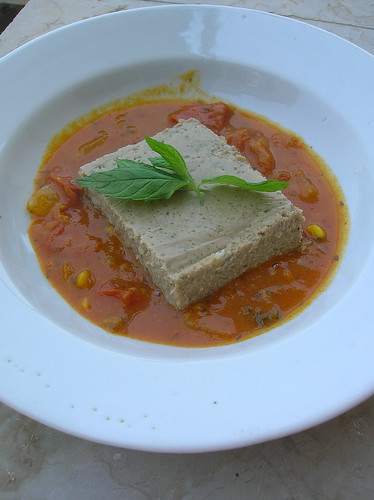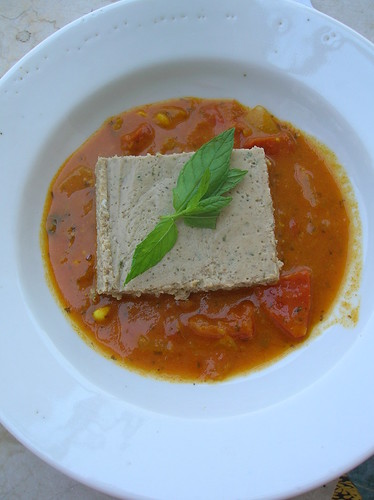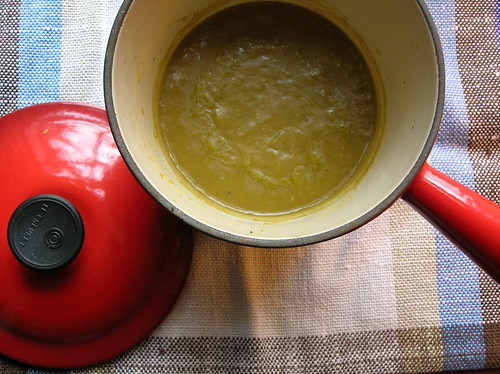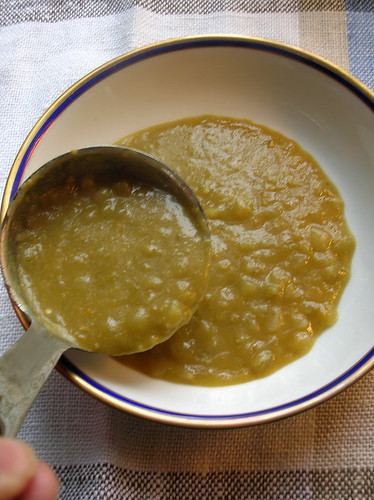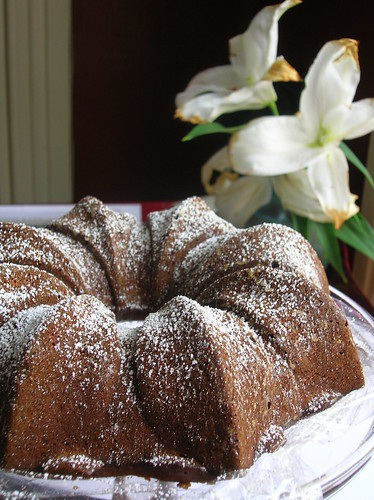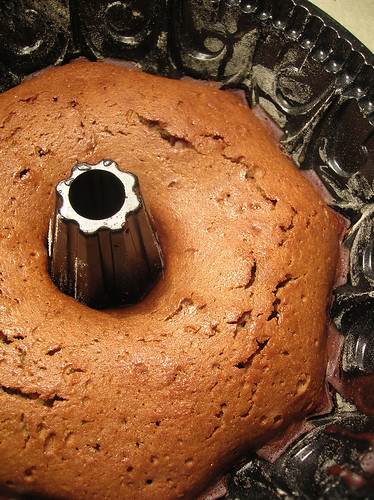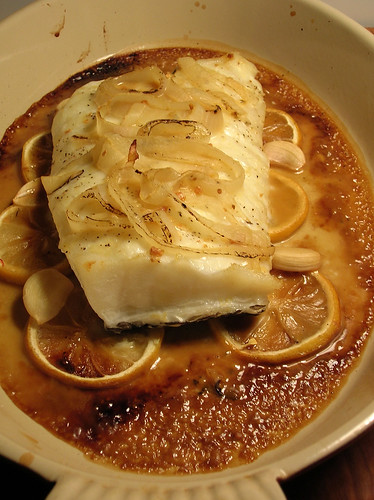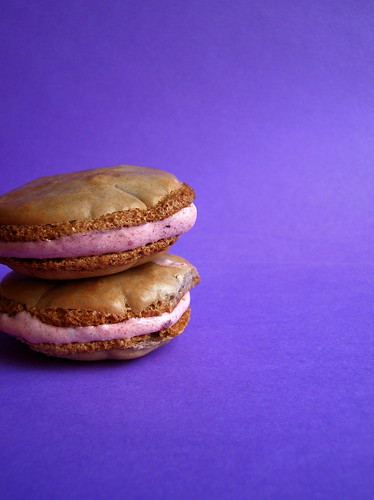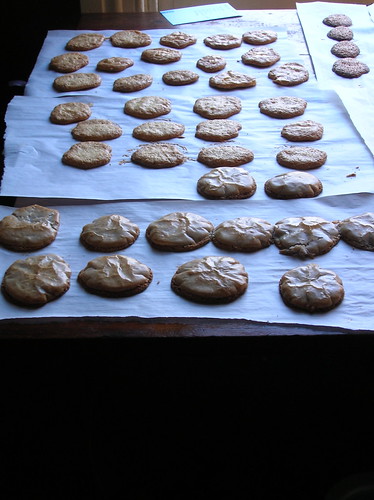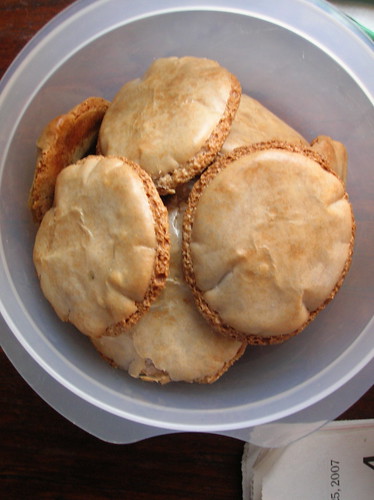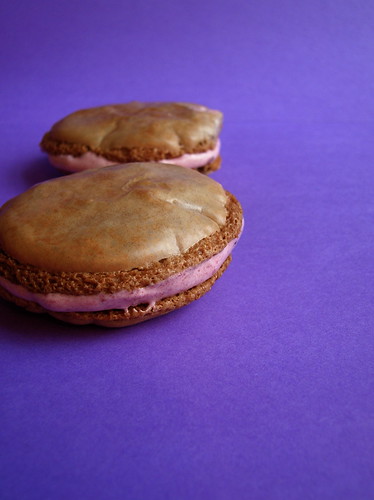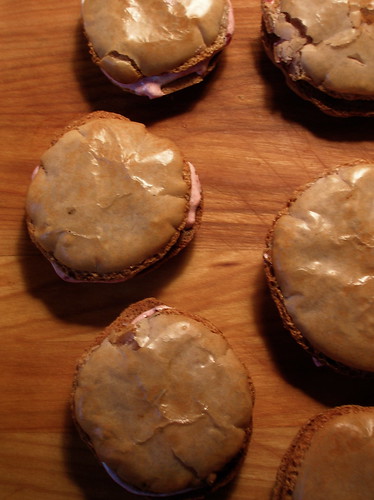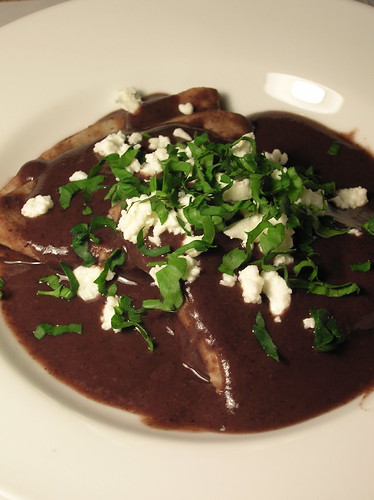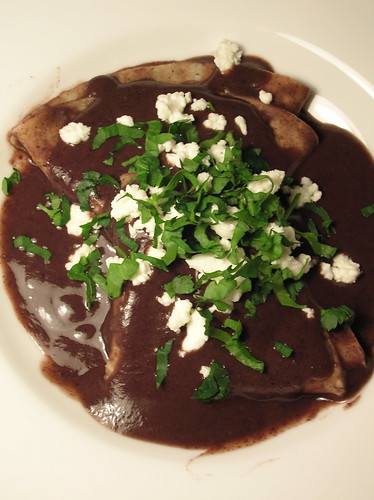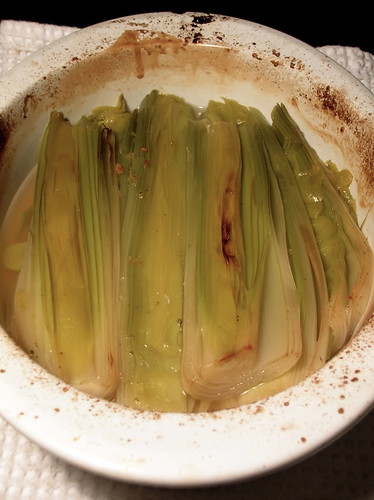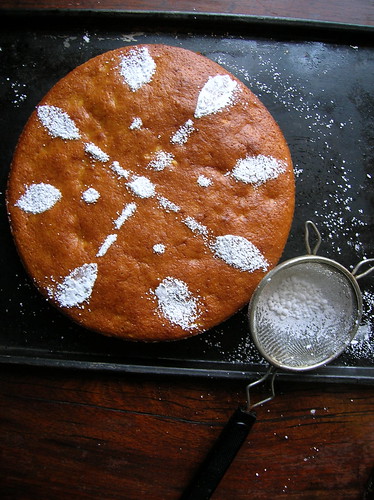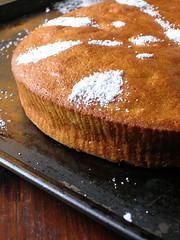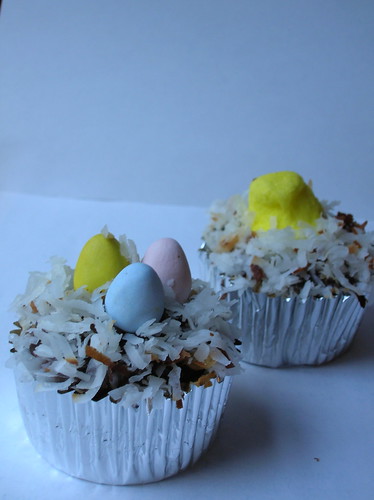
Easter is my mother’s favorite holiday. Weeks before it arrived, she would be working on the perfect Easter dress for me, shopping for terribly uncomfortable shiny white shoes, and dying eggs. In my closet, there are still boxes of the dresses my grandmother made every year, with handmade smocking and painstaking embroidery of little ducks and chicks. There is a photo of me on our front porch in an Easter dress and hat, squinting in the sun and looking positively miserable. Needless to say, I didn’t much like Easter, it meant itchy stockings and being forced to wear a hat and a fancy brunch where my mother’s friends ooh-ed and awed over how cute I was.
There at least was the promise of candy, in the form of an Easter basket, and the excitement of waking up to a surprise. It was always fun to dig around that funny plasticy nesting to see what was in there: one of those crafted sugar eggs, a chocolate bunny, and plenty of jelly beans. My mother had a couple notorious incidents of forgetting the basket until the last minute, hurriedly putting me to bed and then running out to the local drug store in the middle of the night. Though I was fully aware of all this, I never let on, and the basket always managed to arrive in the morning.
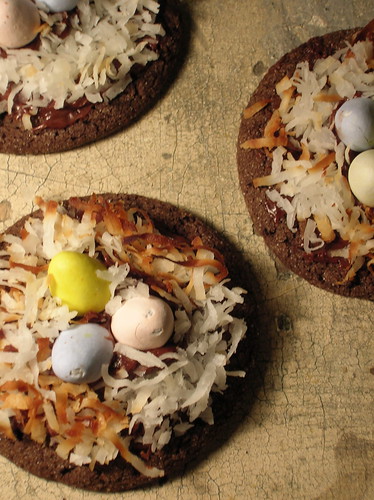
These days, I’m too old for Easter baskets, but I’ve been eyeing these cute little nest cupcakes since I saw them a couple years ago. Luckily, I have a precious three year old cousin, and though I’m sure his parents will not forget his Easter basket, I’m happy to contribute. I placed the little coconut nests on cupcakes and also on cocoa cookies, since the ccokies can be wrapped up and travel more easily. Unlike so many Easter confections, the pairing of chocolate and coconut means these actually taste pretty good too.
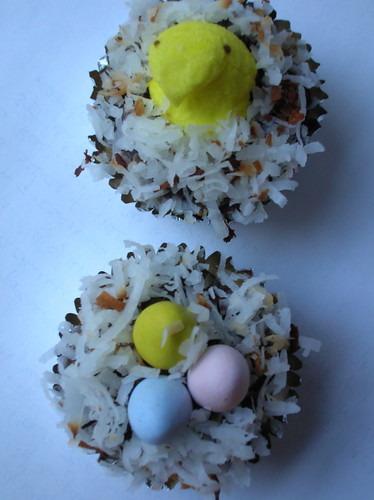

Easter Nests
These are easy and fun to decorate with kids. I’ve provided my basic cupcake recipe below, but you can use any cupcake or cookie recipe you like.
vanilla cupcakes (recipe follows) or cocoa cookies
chocolate frosting (recipe follows)
1 1/2 cups shredded coconut
chocolate eggs, jelly beans, or candy chicks
1. Preheat the oven to 350 degrees. Spread the coconut on a baking sheet and place in the oven to toast for about 8 minutes, until light brown.
2. Spread a small amount of chocolate frosting on a cupcake or cookie and arrange some of the coconut on top to form a nest. Place another small dollop of frosting in the center of the nest and nestle the eggs in the middle.
Vanilla Cupcakes
1 1/4 cups flour
1 tsp baking powder
1/2 tsp salt
6 tbl butter
1 cup sugar
2 eggs
1/2 cup milk
1 tsp vanilla
1. Preheat the oven to 350 degrees;. Line a cupcake pan with paper liners; set aside.
2. In a medium bowl, sift together flour, baking powder, and salt. Using an electric mixer or with a fork, cream butter and sugar until light and fluffy. Add eggs, one at a time; scrape down bowl, and beat in vanilla.
3. Add flour mixture and milk alternatively, beginning and ending with flour mixture.
4. Divide batter evenly among liners, about three-quarters full each. Bake until golden and tops spring back to touch, about 20 minutes, rotating pan once if needed. Transfer pans to wire rack; cool completely.
Chocolate Frosting
6 oz semisweet chocolate, roughly chopped
4 tbl butter
1 tsp vanilla
4 cups (1 box) powdered sugar
1/2 cup milk
1. Melt the chocolate, either in the microwave or using a double boiler.
2. In a mixer or with a fork, cream the butter until pale and fluffy. Add the vanilla, then beat in half the powdered sugar. Fold in the melted chocolate until smooth. Add the remaining powdered sugar, alternating with the milk, until the desired consistency of frosting is reached.
_

